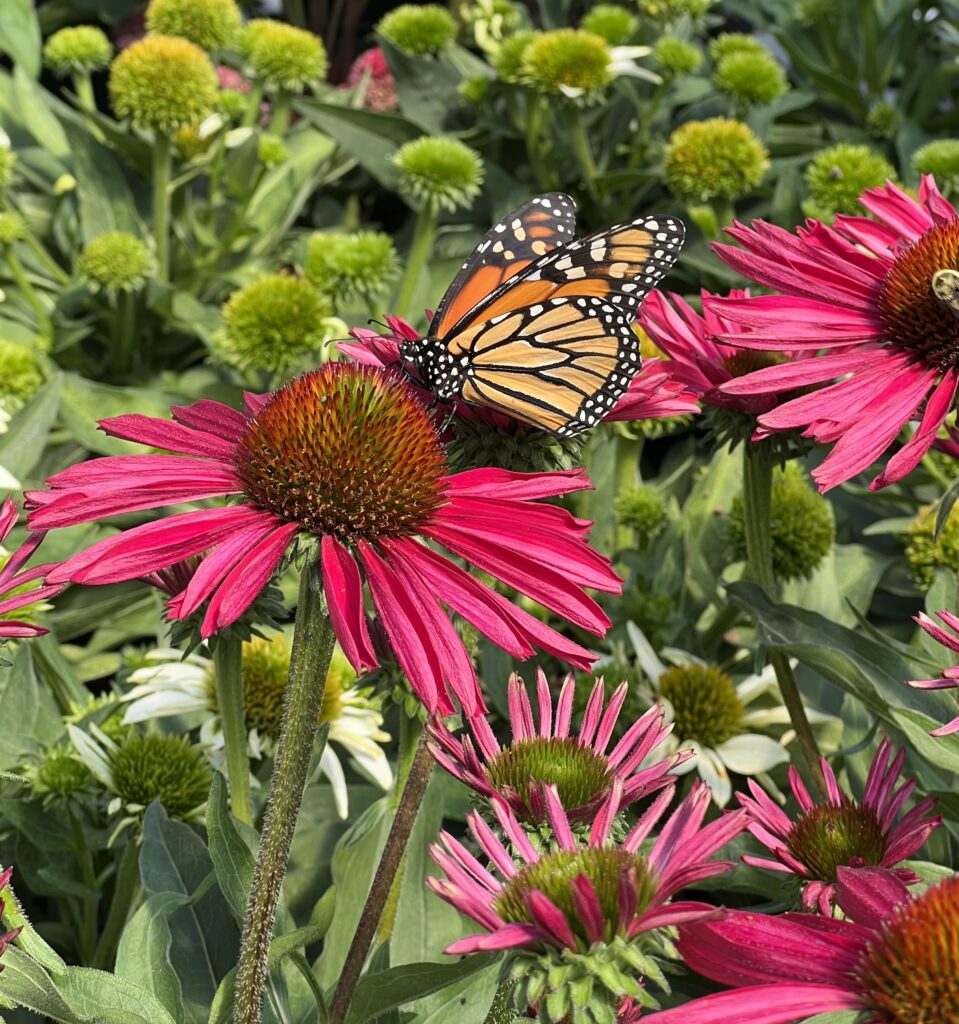At just about any time of year you will find perennial plants in bloom in the Maritime Pacific Northwest. If colorful flowers are on your agenda, then they’re sure to be an integral part of your garden. With careful planning, different perennials can continually bloom in sequence from late winter through summer and into autumn. Understanding how perennials grow, when they bloom, and which are best suited to the site conditions will ensure they thrive in your garden.

Perennials are often only one category of plants represented in an ornamental garden. When I start a new design, I first establish which plants will provide the bones that give the garden structure throughout the seasons. Then I determine where to add seasonal favorites, like perennials. Deciding on the color palette and which plants are best suited to the planting plan, is part of the preliminary brainstorming process that continues as the design evolves. If I am planning a traditional perennial garden, I assess each for flower and foliage color, growth habit and size, and bloom time making sure they will integrate cohesively.
When selecting perennials I look for characteristics that will provide maximum impact with minimum maintenance. By nature, perennials are a hardy group, but not all are created equal.
Here are some of my easy-to-grow favorites that have a long bloom cycle.
Penstemon heterophyllus ‘Electric Blue’ and Penstemon x mexicali ‘Red Rocks’ (Beardtongue)
These cultivars have multiple arching stems that emerge from a basal clump and create a loose mound of foliage. Narrow leaves radiate from the stems and groups of small, upward-pointing flowers create a halo effect. ‘Red Rocks’ has vibrant raspberry-red flowers and ‘Electric Blue’ sports uplifting, iridescent sky-blue flowers. Neither requires deadheading but thinning will encourage flower production and result in a more compact plant. Beardtongues thrive in full sun and ordinary soil without much supplemental water. Cut plants to the ground in the early spring to encourage a flush of new growth.
Sedum (Hylotelephium) ‘Thunderhead’ and ‘Purple Emperor (Stonecrop)
Sometimes called border sedum or stonecrop, Hylotelphium offers numerous variations of foliage and flower variations for sedum enthusiasts. Beginning in late summer, Hylotelephium ‘Thunderhead’ produces clouds of rose-red flower clusters that hover above gray-green foliage. Flower heads transition to deep red and the foliage takes on a saturated burgundy-red tone as the blooms mature. Hylotelephium telephium ‘Purple Emperor’ has striking reddish-purple stems that hold deep purple fleshy leaves. The umbrella-shape flower heads are comprised of many tiny rose-pink flowers that fade to pale pink and white as they mature. The thick, sturdy leaves add texture and contrast nicely when with foliage and flowers with a finer texture. Because they do not require supplemental water, they are excellents picks for a low-water use garden and hot spots. Hylotelephium are pest-resistant and low maintenance – just cut them to the ground before winter, or in early spring, if you enjoy the look of the dried seeds heads during wintertime. The flowers are a favorite of bees and other pollinators that will visit your garden frequently if you plant stonecrop. Good drainage is essential and wet or shady conditions result in weak, underperforming plants.
Echinacea spp. (Coneflower)
Echinacea is grown for its flowers, but when selecting plants for your garden also consider the growth habit and form. Some cultivars have exotic-looking flowers but may not stand up under the weight of their own flowers, necessitating staking or a position next to other plants that can provide support. Stakes can look awkward and may distract from the natural elements of a garden, so I prefer Echinacea varieties that don’t need support. I believe this problem is caused by over-hybridization in pursuit of new cultivars.
Below are some robust Echinacea that have it all.
Echinacea purpurea ‘Green Jewel’ is a floriferous, compact plant with sturdy upright stems that hold large bright light green flowers with a deep green center. The flowers have a cooling, calming effect on a hot summer day and seem to glow in the saturated light of dusk. The unusual color sets off surrounding flowers and blends well with other colors.
Echinacea purpurea ‘Ruby Star’ is one of the largest and most robust coneflowers. It is the most closely related to the naturally occurring parent plant and is just as hardy. Vibrant dark pink flower petals surround a burnt orange center. Both the foliage and flowers are larger than most echinacea and it thrives in most sunny locations without much care. Coneflower is effectively planted en masse and allowed to naturalize and also as a medium height element in a perennial garden.
Echinacea ‘Tomatoe Soup’ grows in a well-behaved clump with grass-green lance-shaped leaves. Its rich, tomatoe-red sword-like petals point downward slightly and surround an emerald green-brown center. Simply delicious.
Echinacea does best in full sun and average to better soil. Little supplemental water is required once plants are established and maintenance is minimal. Removing spent flowers will keep plants looking tidy and encourage flower production.
Now is a good time to add perennials to your garden and complete design plans to get the perfect-looking garden for this spring and summer.
Need more ideas? Contact me for a design consultation to learn about landscape design or how to maximize the impact of seasonal plantings for any spot in your garden.
